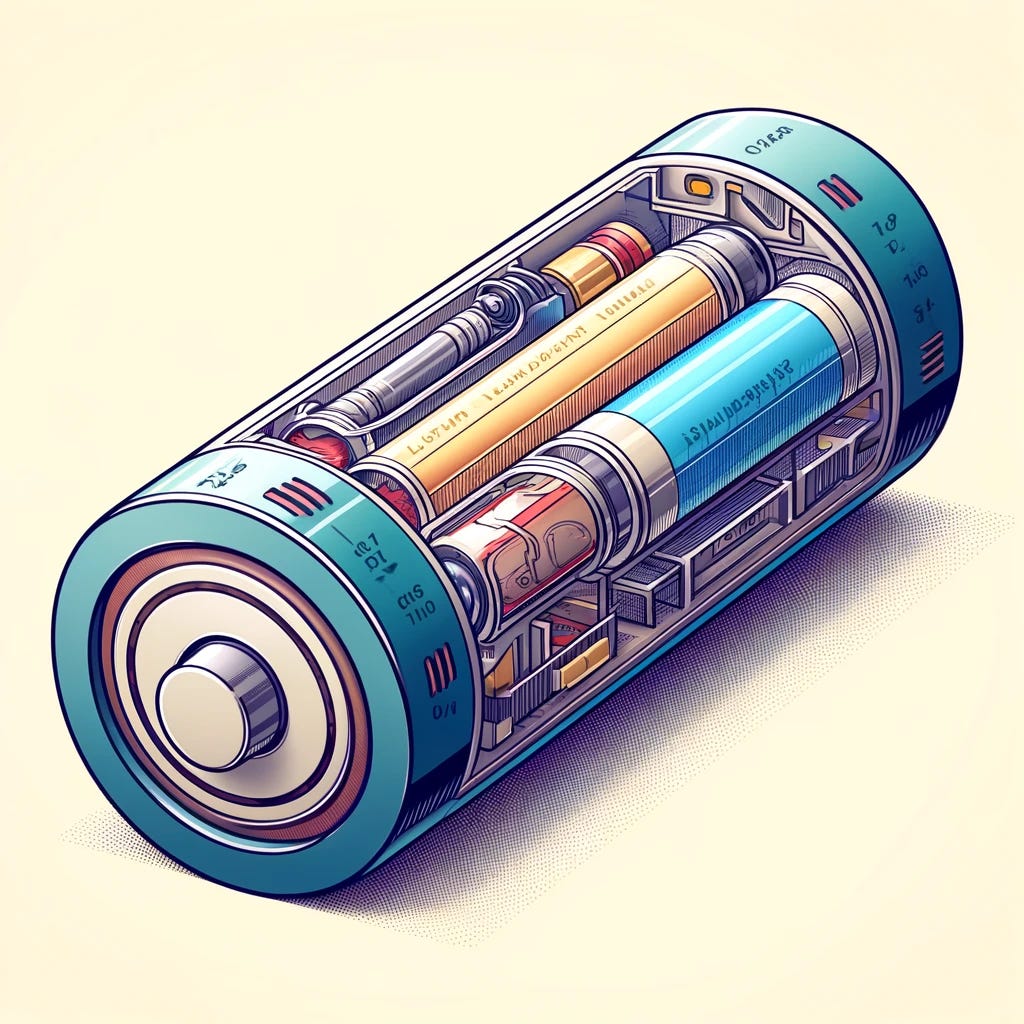Batteries: The Inner Workings. Part 1
If you read my batteries newsletter from 2022, then you know some things about batteries like how lithium is extracted to make them and the importance of a batteries to store energy from solar panels at night.
If not, you can read it here. I also highly recommend my newsletter on electricity, which you can read here.
Now, I will talk about the parts that make up this pinnacle of modern life. For example, the Lithium-ion battery contains an electrolyte, but not the one from energy drinks like Gatorade. :-)
For more information, scroll down without causing a big explosion or fire from opening a battery.
What is inside a battery?
As I said in the previous newsletter, there are so many unusual types of batteries. So, the parts of a battery may look different. But they contain similar parts and function in a comparable way. In this newsletter, we will discuss Li-ion (Lithium-Ion) batteries since most of you are using them as you read this newsletter on your laptop or smartphone.
How does a Li-ion Battery work?
Li-ion Batteries work with just five parts.
These are the anode, cathode, electrolyte, separator, and two current collectors. These are just the functioning parts, and there are extra parts that are added like casing.
Discharging
So, we have the anode. The anode is made of graphite, which are layers of graphene. But, in between the graphene is lithium if the battery is charged. Lithium has three electrons. Two of them are in the first layer, and one of them is in the outer layer. Lithium easily gives up the electron in the outer layer. So, when a circuit is formed, the extra electron leaves the lithium atom, and it becomes an ion. This process is called oxidation.
The electron powers a load and then comes to the cathode. In the cathode, there are many compounds depending on the battery. We will use cobalt oxide layers for simplification in this newsletter.
So, the cobalt in the oxide needs an electron to be stable. The electron from the cathode tries to stabilize the cobalt in the layers.
But there is still so much negative charge in the cathode, and that is very bad. So, we need something positive to be on the other side to balance the extra negative charges. That is where the electrolyte comes in.
The electrolyte is a liquid lithium salt that allows the positive lithium ions from the anode to pass through. This fluid allows positive ions to pass through.
The positive ions get to the cathode and go in between the layers of cobalt oxide, balancing the negative charges.
Now since this is an important but complicated topic, we will cover the rest of it in the next newsletter. That newsletter will explain separators, current collectors, and charging.

